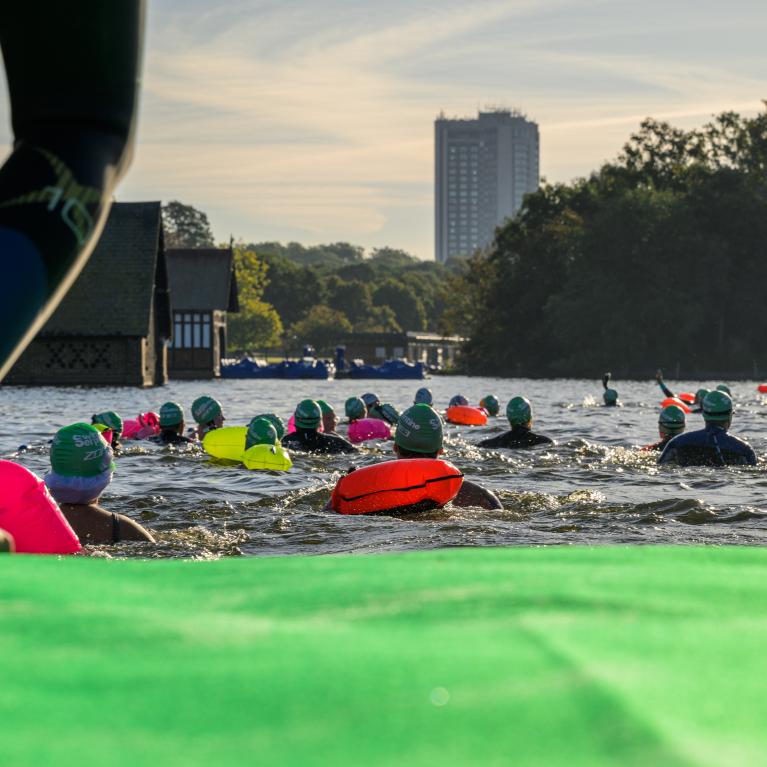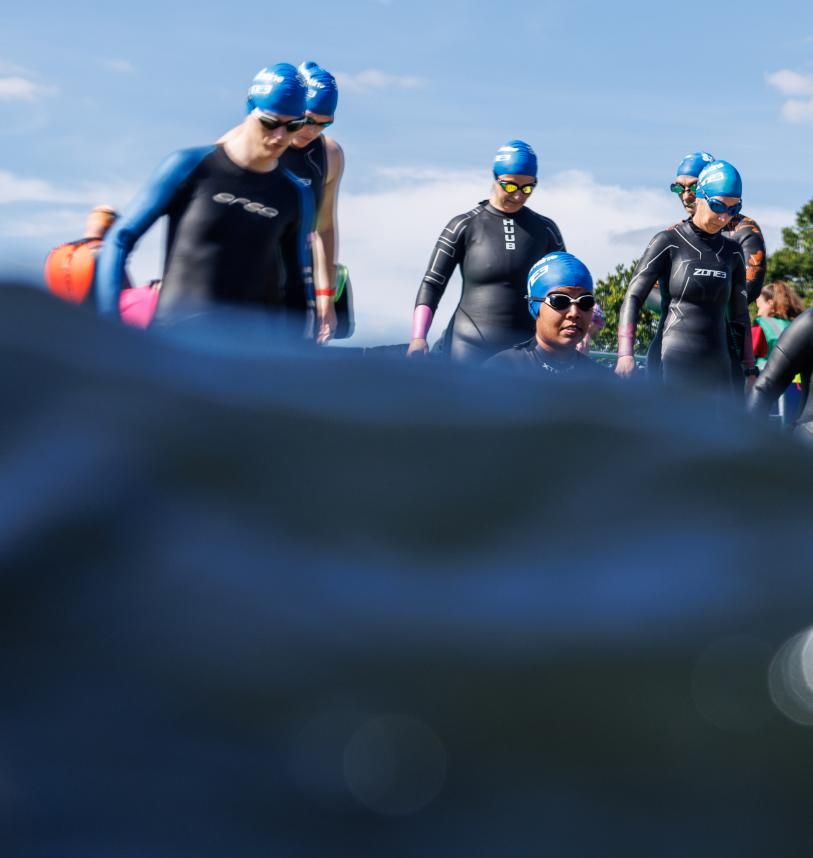
Whether you're gearing up for your first open water swimming event or you're a seasoned Swim participant, these tips will help you feel confident, comfortable, and ready to make the most of Swim Day.
Stick to liquid fuel before the event
You don’t want to swim on a full stomach, so have your last meal – such as porridge or eggs on toast if it’s a morning swim or a bowl of pasta if later – at least three hours before your event, says Marianne Clark, an open water swim and triathlon coach at Ocean Set in Brighton. She also advises swimmers to eat carb-heavy meals and snacks for the two days before their event.
“An hour before, you could have a banana,” she says, “but after that just make sure you’re well hydrated by sipping on water or a sports drink up until the event begins. You want to avoid anything solid at this stage.”
Stop your wetsuit from chafing
“Wearing a wetsuit that fits you correctly is the best way to guard against chafing,” says Marianne. A wetsuit that is too loose can lead the excess material to rub against your skin, while a wetsuit that is too tight will also cause chafing. A well-fitted wetsuit will reduce friction and prevent water from entering the suit and slowing you down, she says.
“Going to a shop to get advice is helpful, as often if you try a wetsuit on at home for the first time you might think it’s too tight, but in the water, it would be fine,” says Marianne. Check it feels comfortable, especially around the neck, armpits, and inner thighs, as these are the areas that are often prone to chafing. Brands such as ZONE3 run wetsuit rental programmes, which could be a useful way to test sizing before you buy your wetsuit.
Make sure you practise swimming in your wetsuit before your event, says Marianne, and if there are areas of your body that you think may chafe, consider rubbing an anti-chafing balm on them before your swim. Also, when training, always rinse your wetsuit well after use to remove chlorine or salt water, which can irritate the skin, she says.
Don’t forget your goggles
Get all your kit out the night before, says Marianne, including your swimsuit, wetsuit or tow-float, warm clothing for after the event, a water bottle, and snacks. And don’t forget your goggles – some swimmers will often take a spare pair in case their existing pair break on Swim Day. Make sure you’ve trained well in the kit you’ll be using and remember to check the water temperature in the days leading up to the event, to ensure you’ll be wearing the appropriate kit for the temperature.
Be familiar with the course layout
Before your swim, it’s wise to have a picture of the shape of the course in your head, says Marianne. The Swim Serpentine route, for example, is a loop marked by large brightly coloured inflatable buoys, while other swim events may involve swimming the points of a triangle or be out-and-back courses.
“It can sometimes be disorientating swimming amongst a group of swimmers so it’s helpful to have a good idea of the direction you’ll be travelling in, how many turns you’ll have to make and where the inflatable buoys are,” she says. “Make sure you lift your head to sight – stop for a second or two if you need to – and don’t rely on other swimmers to know the right route. You don’t want to go wrong by following someone who is swimming off course.”
Avoid the scramble
“If you’re a beginner or new to taking part in open water swimming events, stay out of the scramble at the start and position yourself at the side of the pack,” says Marianne. That way you can start off in your own time without worrying about people swimming on top of you or getting a stray elbow in the face.
Swim close to the safety team if you’re nervous
Open water swimming events, such as Swim Serpentine, have really strong safety teams in place in the water, so if you’re feeling nervous, swim close to them and keep them in your eyeline for reassurance, says Marianne. If you need to get their attention during the swim, turn onto your back and put your hand up in the air and someone will come to help you.
Take long, deep breaths on the Start Line
“Breath is a really important tool to help calm you down,” says Mel Berry, an endurance swimming coach and co-founder of wellness and health platform, Her Spirit. When you’re waiting to start your swim, it’s perfectly normal to feel a bit nervous, she says, which might make you take shallow breaths, and cause your heart rate to go up.
“I always tell women to take some long, deep breaths, even if it’s just for 15 seconds or so, and to look around at what they can see, hear, and smell. There is good evidence that going through those processes will help calm you down and stop you worrying about the event ahead,” says Mel, whose tips also include smiling, even to yourself, to feel more positive and sparking up a conversation with the swimmer standing next to you, as that provides a helpful distraction too.
Written by Sam Haddad. Sam is a freelance journalist based in Brighton, she's been writing about sport and the outdoors for over 20 years.
